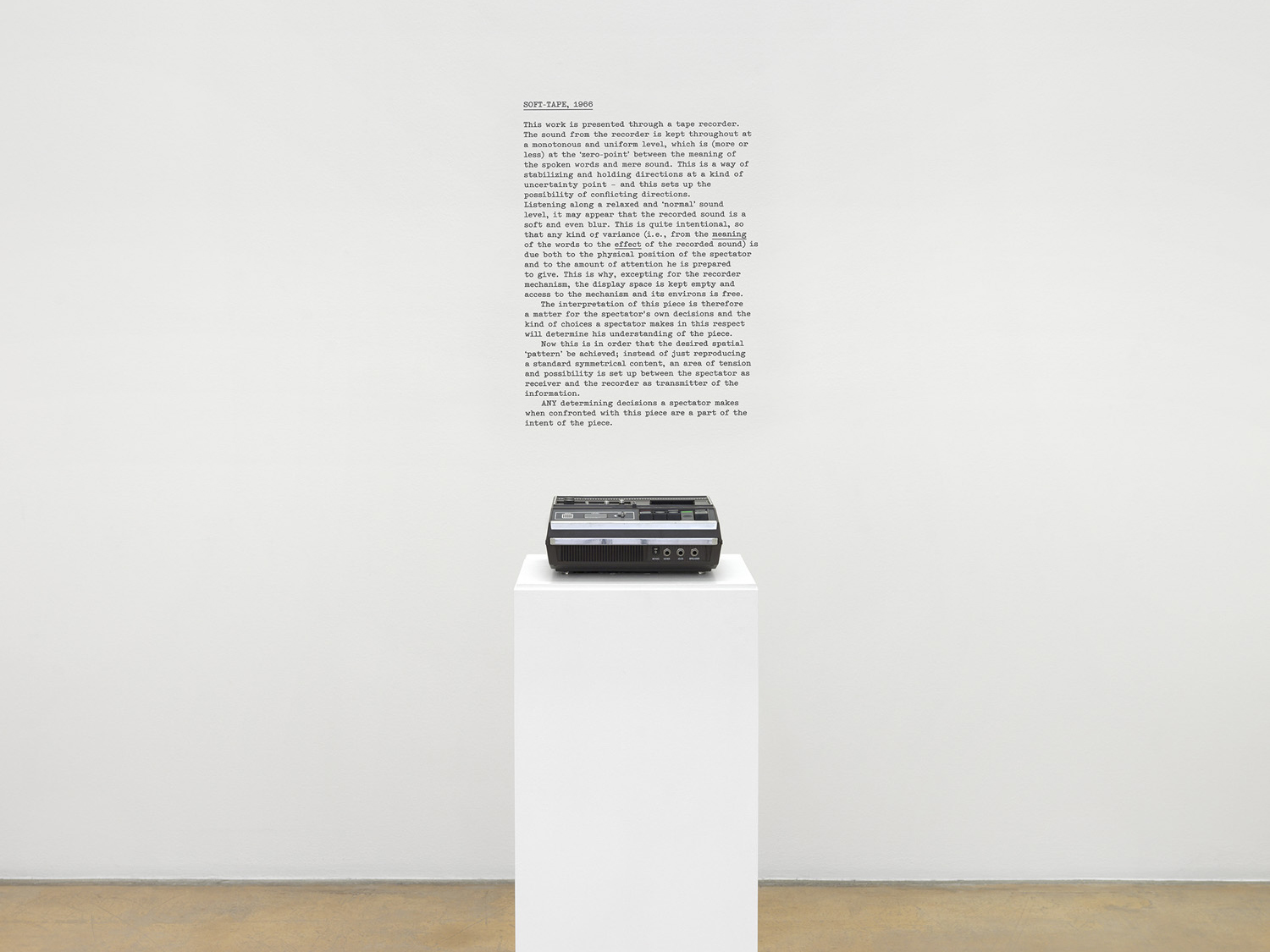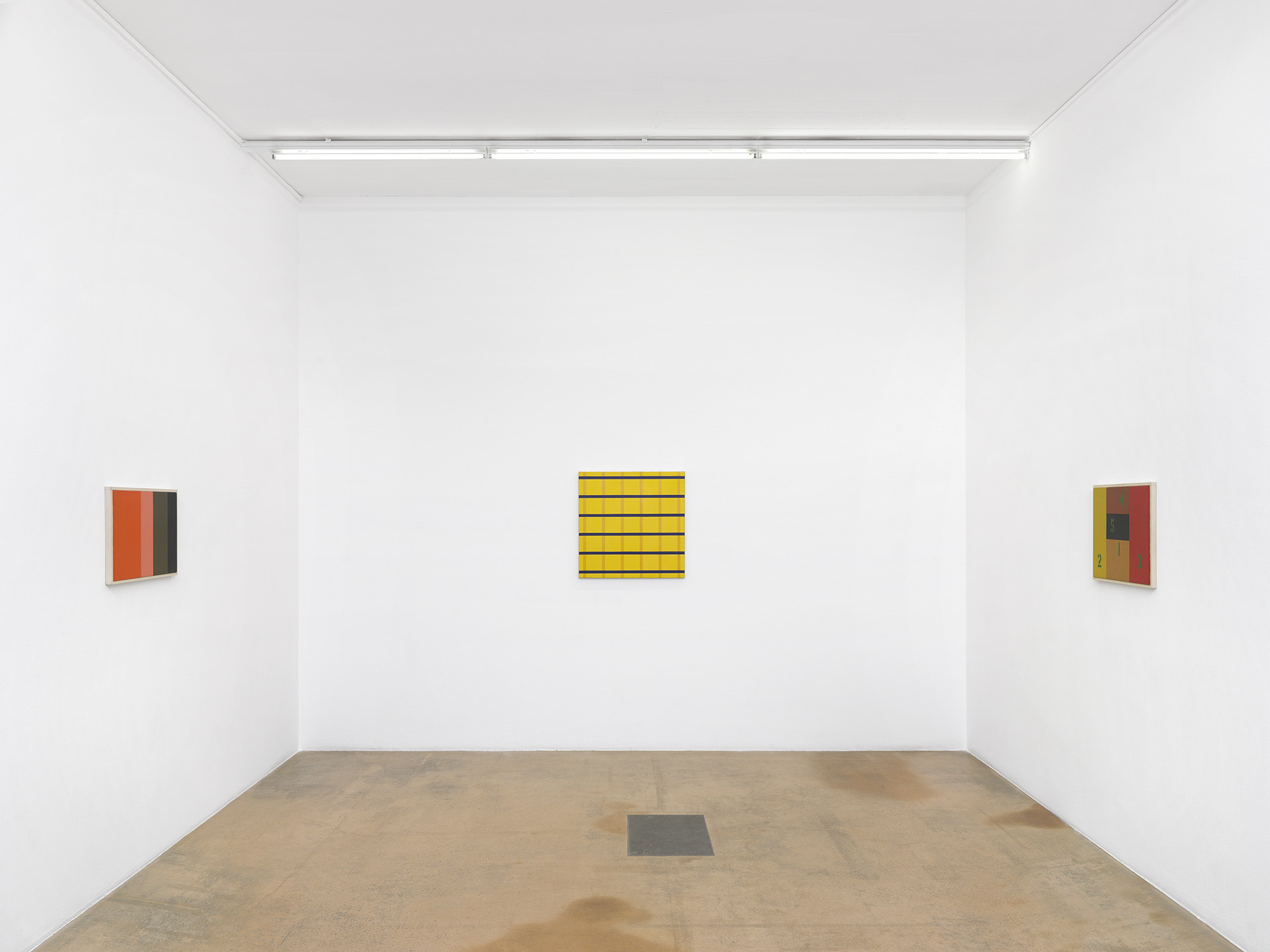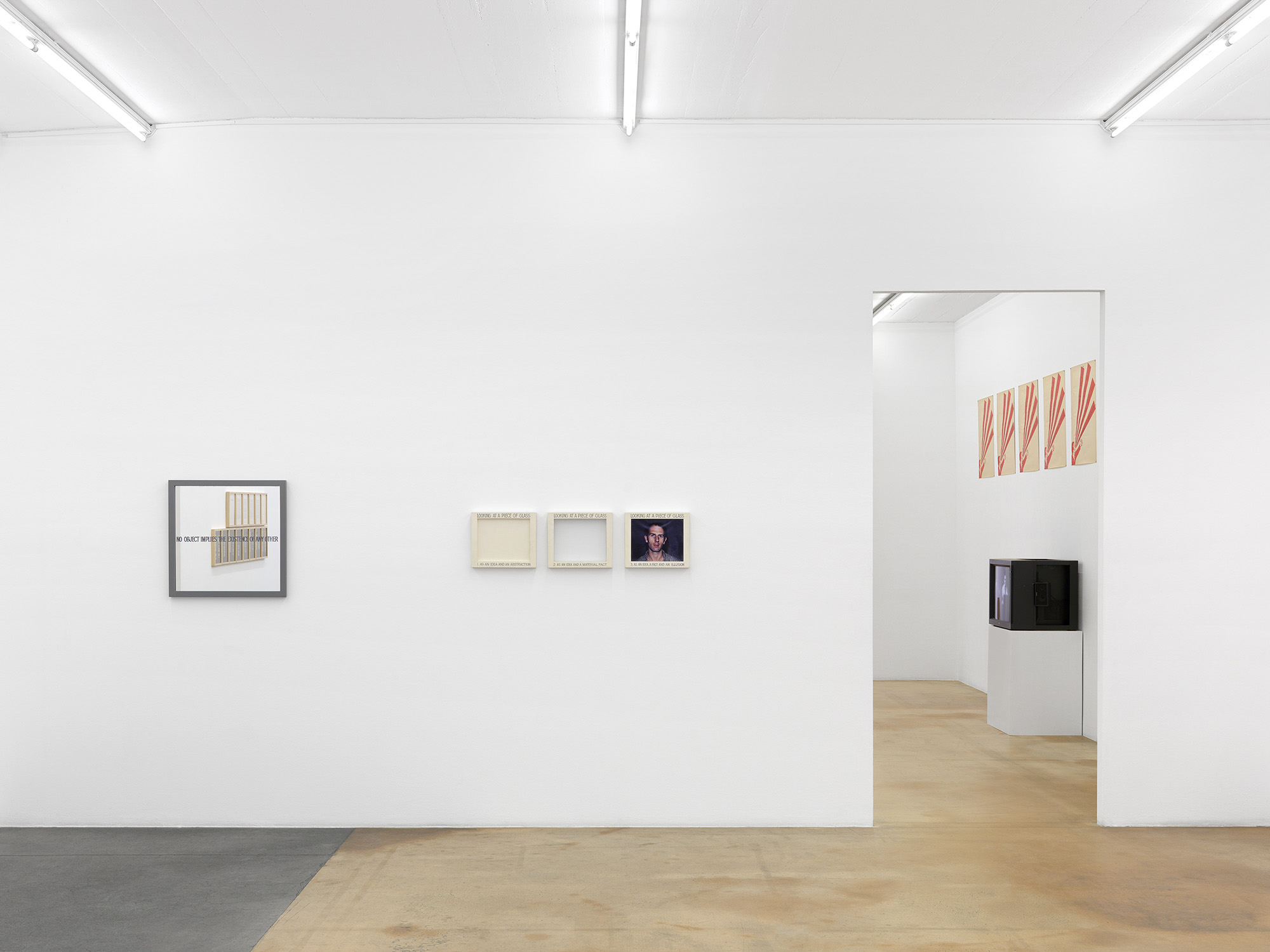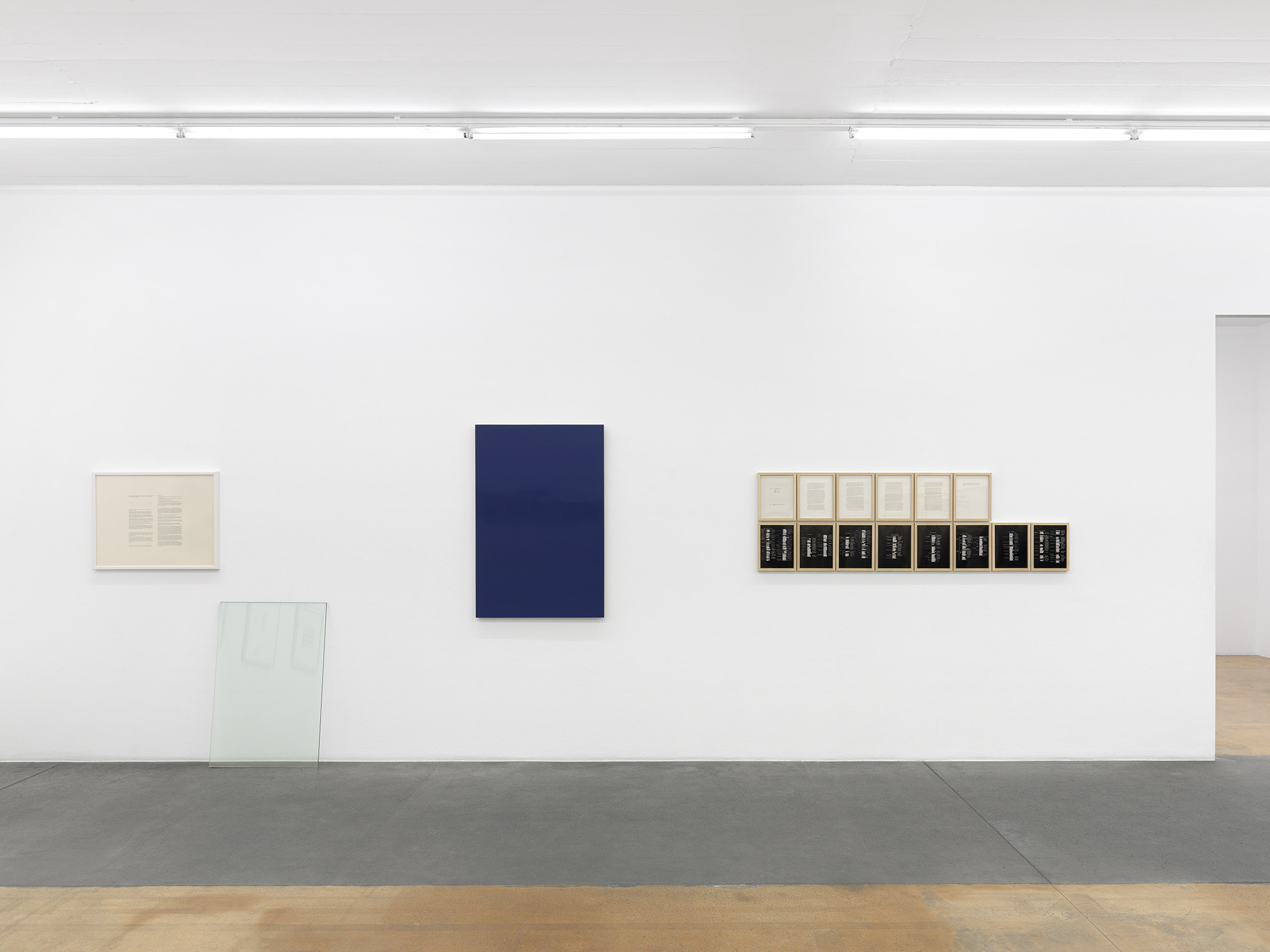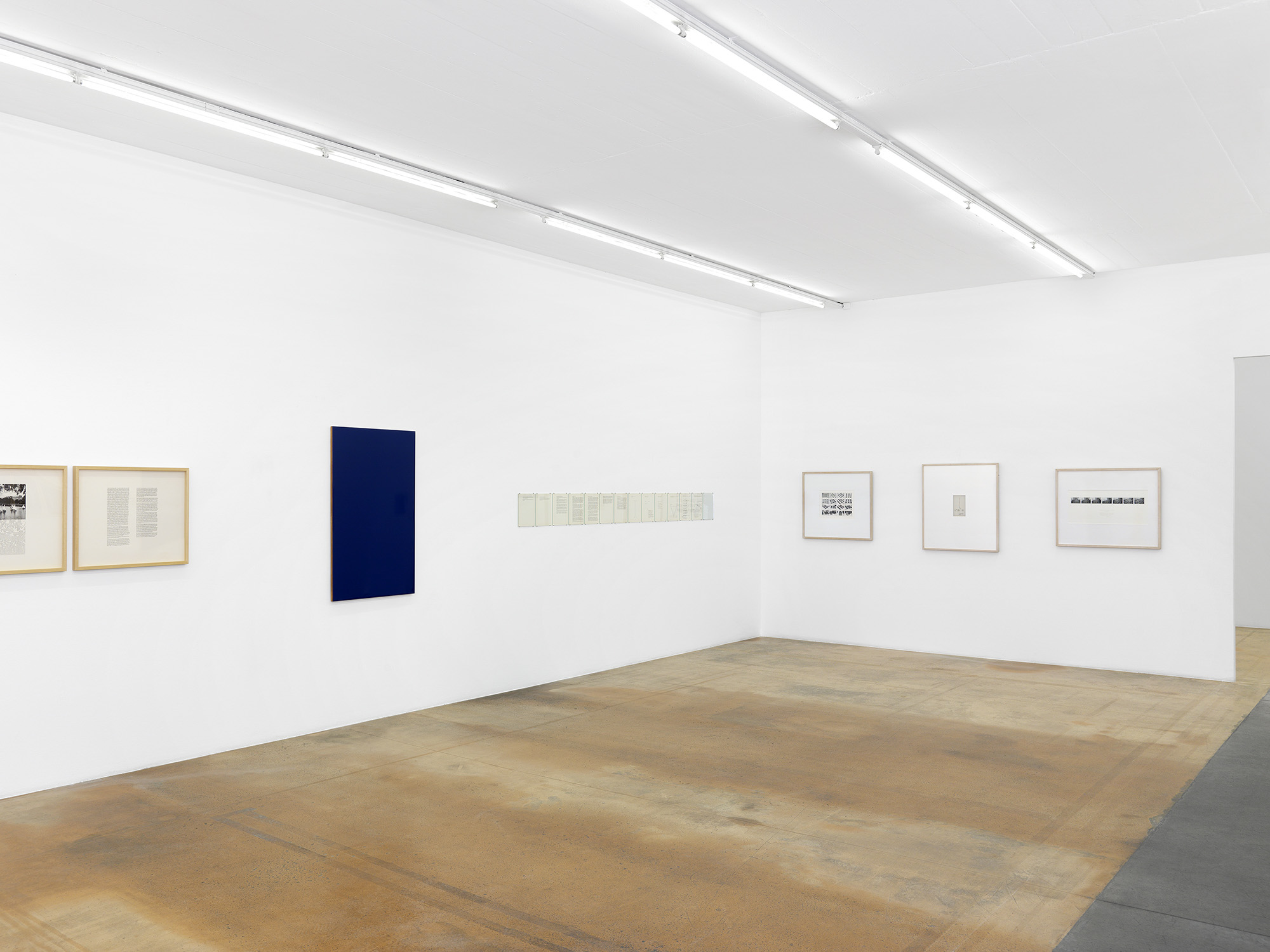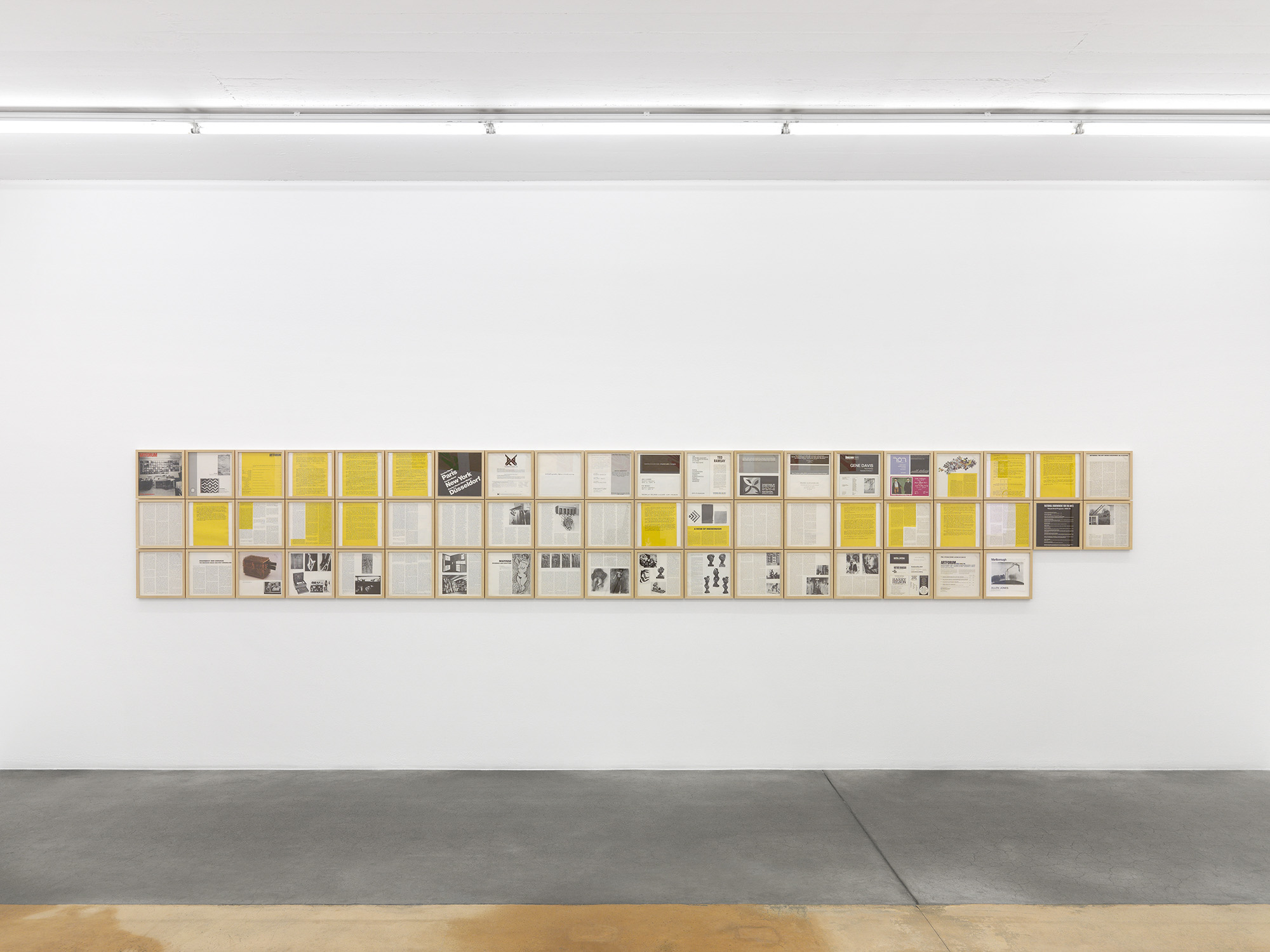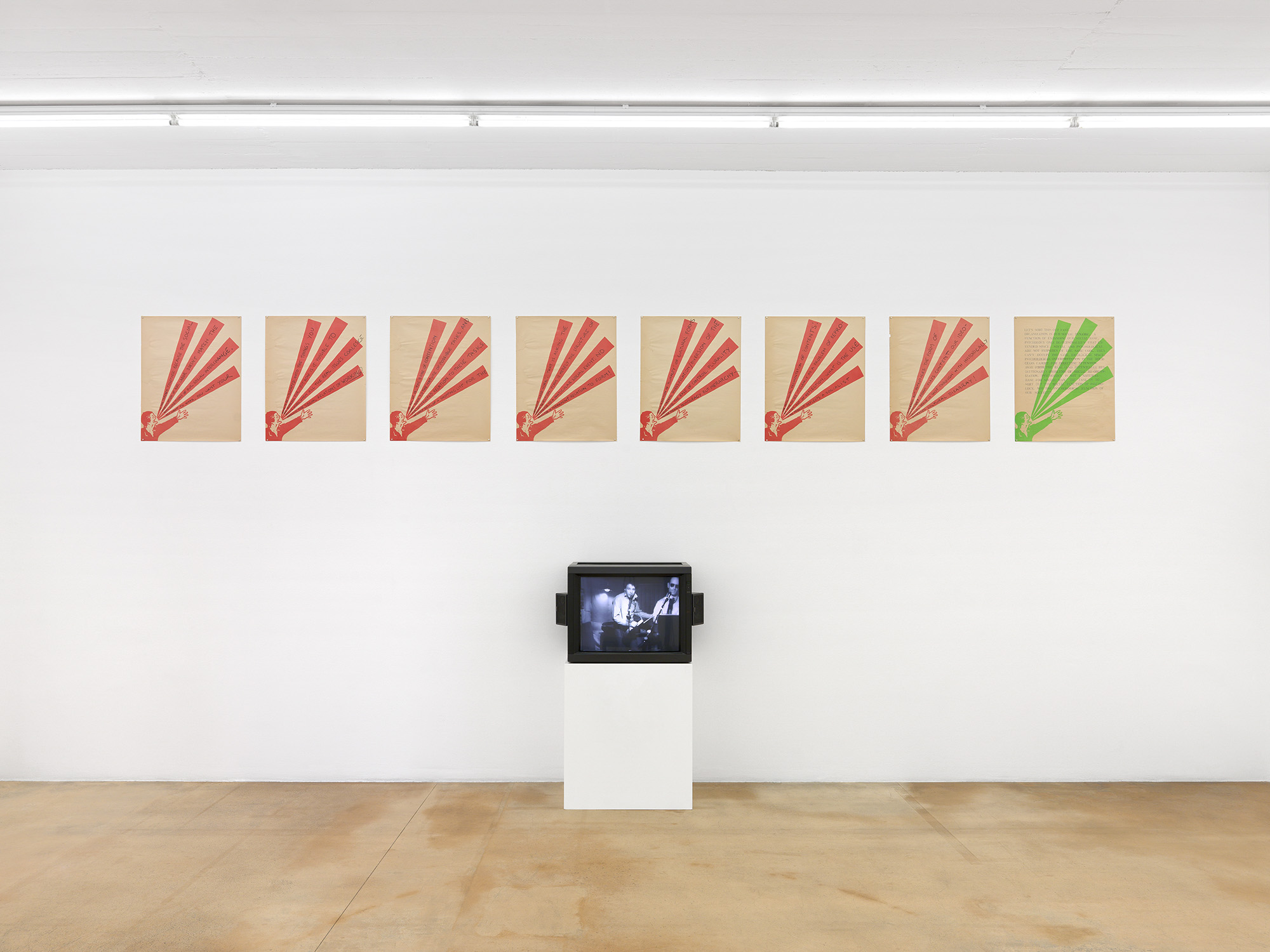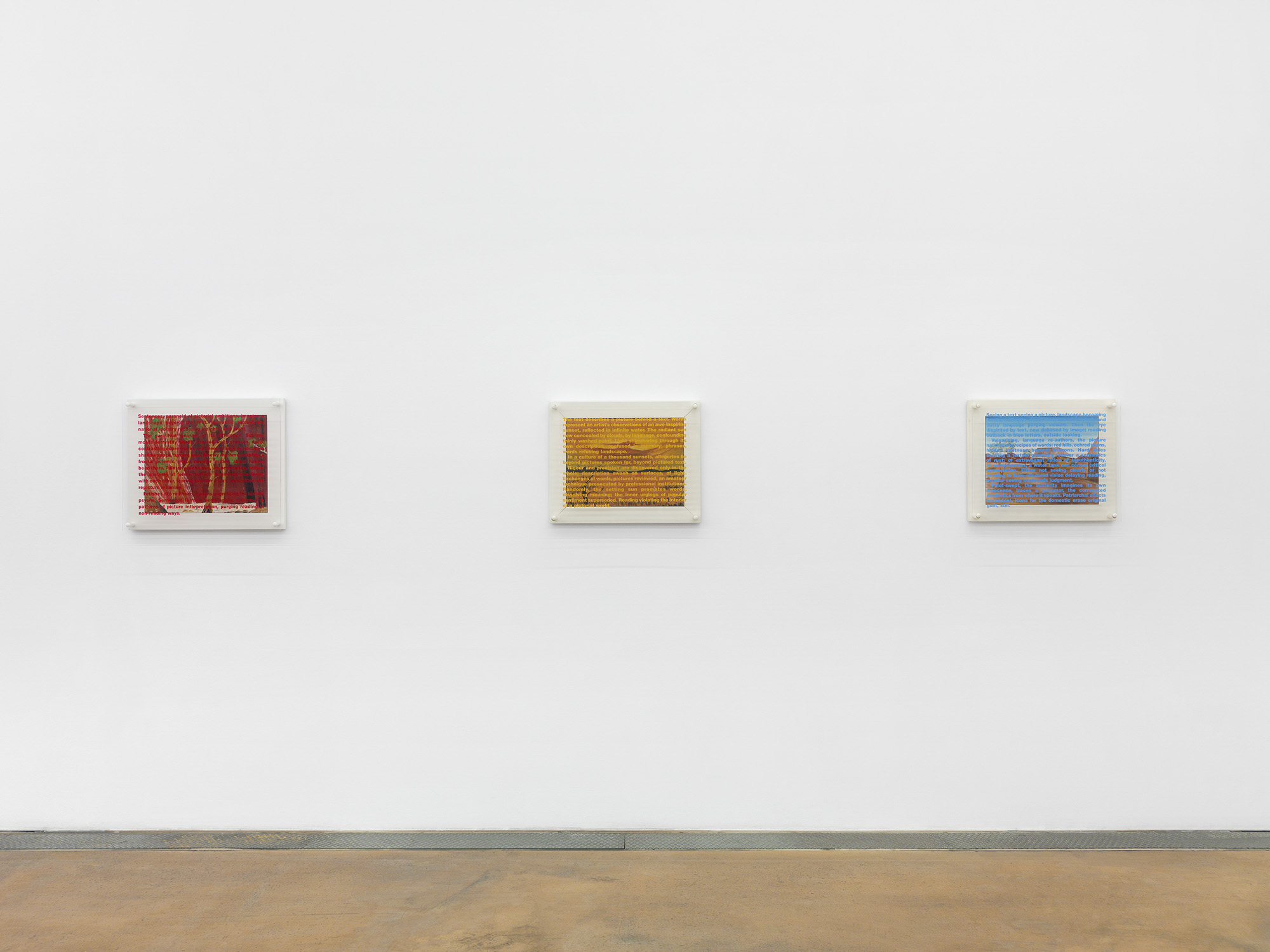Ian Burn has been described as many things: an activist, a trade-unionist, a journalist, an art critic, a curator, and an art historian—and in a moment of self-deprecating alienation, he once described himself as “an ex-Conceptual artist.” This exhibition revealed Burn as a probing and often collaborative Conceptual artist, puzzling with the perceptual challenges of “looking at seeing and reading” in company with others.
The survey consisted of artworks from 1966 to his death in 1993, accompanied by journals, posters, slide talks, and videos. It traced his remarkable journey from Australia via London to the so-called center of the art world, New York, and the expanded world of the collective Art & Language.
It began with several Minimal paintings and a selection of his early Conceptual artworks that combine text with materials of low visibility (like mirrors and glass), and two installations made with Mel Ramsden. It ended on his return to Australia, where after more than a decade immersed in trade-union journalism, he began to make art again. One late series, Value Added Landscape (1992–1993), reveals how he straddled different spheres, spanning amateur landscape, Conceptual art, and politics.
In the three decades since his death, Ian Burn has become something of a model for the political legacy of Conceptual art, as a result of his activism particularly in union journalism and in advocating for artists to “organize.” While his withdrawal from the art world was always partial, it was unlike the political turn of much contemporary art, insofar as the latter remained within the art world itself. It was hoped that the exhibition will lead to greater recognition of his contribution as an artist in rethinking art in a “decentered” world through what he called “peripheral vision.”
The exhibition was organized chronologically into five sections, each specific to a place and time, revealing the origins and often collaborative character of Burn’s Conceptual art across three continents and three decades at the end of the 20th century.
- The exhibition, curated by Ann Stephen, received the support of the artist’s Estate, the Milani Gallery (Brisbane), and the Australia Council for the Arts
